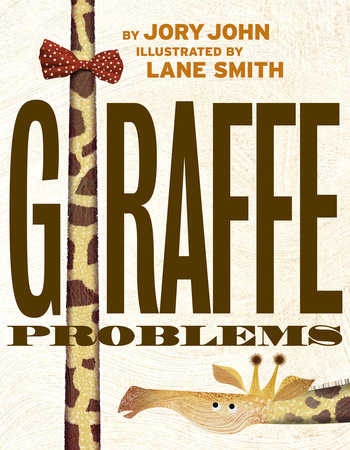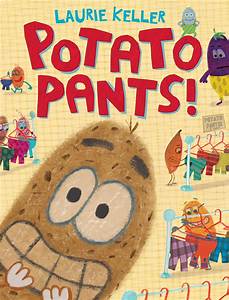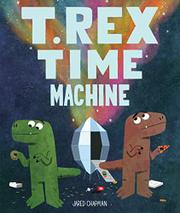Our local elementary schools all have Guest Reader programs, in which parents and grandparents can sign up to visit their child’s classroom to do a read aloud for the class. This is such a popular program that customers tell me the sign up for guest reader slots is mobbed on Back-to-School nights, and one school even reserves each child’s birthday as a “guaranteed” sign up day for their family, to prevent carpool line skirmishes between disappointed parents. (I realize as I write this what rarefied air we breathe in this neighborhood, where parents fight over the chance to be active in their children’s days, and can afford the time to do so.)

Bringing the issue of neck envy to story time, Jory John and Lane Smith’s GIRAFFE PROBLEMS is a perfect choice for reading aloud.
We see a lot of these parents at the shop, usually a day or two before their designated performance, as they suddenly realize that they need something new to read aloud… something that has not yet been presented to their child’s class, meets the requirements of length and will be appealing to the age group, and won’t have any religious holiday references (even Halloween is a no-no in our school system). We get asked for “the perfect book” all the time, of course, but this selection feels particularly important. Recognizing that the recess reputation of the child may in fact be linked to the parent’s choice and performance is a heady responsibility – I certainly don’t want to be accountable for losing first turn at the tire swing, do you? In addition, we want the parent to totally enjoy the experience, avoiding that embarrassing moment of failure if the teacher has to interrupt the story to get some kids to “quiet down and respect our guest” (which is the equivalent of hanging a giant “BORING” sign around someone’s neck).
We’ve developed a short list of key pointers, delivered over the bookseller’s shoulder as we lead the adult to the picture book section, to show them “just a few ideas… even though what you asked for is a good option, too!” (Note: it usually isn’t.) Rarely is the customer’s first requested title one that we feel good about. Sometimes, it’s one that their own kids liked, but several years ago, and it’s either too young or too familiar. Sometimes, they want to read something inspirational or with a good moral lesson. There’s a time and place for that, and a thoughtful, serious story is a lovely experience for a teacher to share with their class. But in the excitement and fun of a new, unfamiliar guest reader? Go with humor. Go with things that make children laugh, that let the reader do outrageous voices, and if nonsense words or any body part or function is presented in a silly way, even better. Keep the experience lighthearted, and full of enough excitement that even the wiggly kids will follow along, giving the teacher just 4 minutes to breathe and think about lunch.

Wade Bradford’s THERE’S A DINOSAUR ON THE 13TH FLOOR has that perfect last page of snoring zzzzzz’s.
Illustrations are key, and should be part of the read aloud experience, even in the upper elementary grades. Lots of funny picture books rely on pictures to deliver the punch line. Those may not translate as well in front of a classroom, where not everyone can see the detail. A little of bit of narration added to explain the picture is OK…. but anything that requires more than a sentence falls flat in a group. The best use of illustrated punch lines comes when a reader can just show the double page spread, held up in front of their face, and say nothing at all.
Many funny books rely on rapid page turns, which is a skill developed with practice. So, too, is the underrated skill of reading upside down (holding a face-out book in your lap, for example, when the kids are sitting on the floor) or leading the story along with the appropriate pacing. “Reading with expression” is not the same thing AT ALL as reading a picture book to a group. I suggest that guest readers read the book out loud at least once to practice, even if they have to do so in their parked car outside of the school. Book covers with jacket flaps are not an ally of the guest reader, and should be removed before beginning. Volume, too, is important. An entire classroom can be held breathless with a whispered line… but only if delivered with confidence and great diction.
Many adults are tempted to look for books that rhyme, and while this is a comforting bedtime style, it can be tricky in a read aloud. The key is to not SIT on the rhyme by emphasizing it. The kids will hear the rhythm, and they won’t necessarily marvel at the vocabulary machinations that the author developed to hit the right sounds. Let the rhyming fall where it may, but stay with plot and characters’ voices, and the energy of the room will stay high. In the same way, let the puns just be part of the story. They will get them – but not every line needs a pause or laugh track.
It’s particularly kind when the guest reader donates the book to the classroom library after they read, so that the story can be enjoyed again by each student at home. A few weeks ago, one frazzled father stopped in on his way home from work, wondering if we knew what book had been read aloud in Mrs. Hanger’s pre-kindergarten classroom the week before, because all he had heard about was THAT DINOSAUR BOOK WITH DONUTS. With a smile and a mental note to praise the bookseller that I had heard handselling just that exact title a week ago…. I pulled that book from the shelf and thought about how stories find their own way to be told and retold, from bookshop to classroom to backpack to bedtime, creating giggles and silly voices as they go.




What a great guide to the read aloud! I read in my daughter’s preschool class (Move Over Rover and No More Bows) which both went over very well. But I did notice that other parents picked more preachy books. I keep asking my daughter if I was the best reader. I certainly hope so, since I am a children’s librarian and that’s my job!